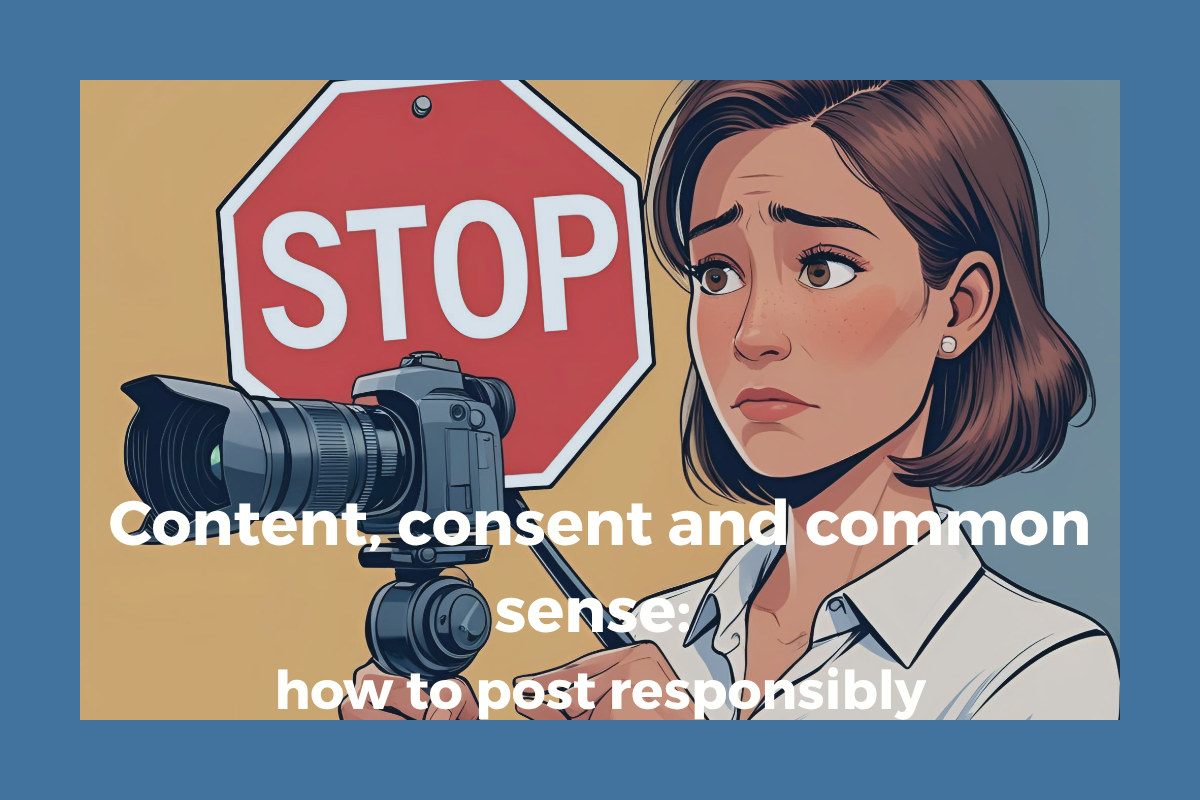Everyday content – a quick office photo, a technician handover shot, a behind-the-scenes Reel, a partner quote – is now part of your public record. Done well, these small moments build credibility and feed your PR pipeline. Done thoughtlessly, they trigger takedowns, staff complaints, partner friction and, in the GCC region, potential compliance issues.
This blog post focuses on the habits that protect trust, help your PR and reputation management while keeping your content machine moving.
First, before you post, ask: what outcome do we want – proof of service quality, employer brand signals, a partner case study, or investor reassurance? Treat each post like a mini press asset: is it accurate, fair, on-brand and useful to the audience?
People first: consent as a relationship practice
Photos and video that identify someone count as personal data anywhere but especially in the region where there are robust rules and guidelines in both the UAE and Saudi Arabia. That doesn’t mean you can’t post; it means you should capture consent in a way that’s clear, specific and easy to withdraw.
- Make consent part of routine workflows: onboarding, site-visit briefings, supplier NDAs. Keep a simple log and refresh it periodically.
- Treat close-ups and interviews as “new consent moments” even if you have a general policy.
- Handle minors and sensitive sites (healthcare, education, government) as hard no-publish without explicit written permission.
- If you outsource editing or store assets outside the country, reflect that in your vendor terms and data handling notes.
When a post becomes an advert
If a post promotes products, services or a brand relationship, different rules kick in – even for a quick clip.
- UAE: The UAE Media Council’s Advertiser Permit covers individuals who publish promotional content on social platforms, paid or unpaid. It’s now mandatory and takes effect three months after the 30 July 2025 announcement. If you use creators, check they hold the permit and display it on their accounts.
- KSA: the Mawthooq licence from the General Authority for Media Regulation is required for individuals posting advertising content on social media; it’s typically valid for three years and tied to a registered account.
- House rule: treat any sponsored creator collaboration, affiliate link or product plug as advertising and apply the permit/licensing test before you post.
PR hygiene that prevents takedowns
These small habits pay off in goodwill with staff, customers, partners and media:
- Approvals that respect time: for partner quotes and staff profiles, a same-day, single-pass approval window reduces post-publish edits without killing momentum.
- Caption for context: name people correctly, add roles and date/location, and avoid implying endorsements. Post Arabic and English where relevant to your audience.
- Avoid accidental disclosures: whiteboards, client dashboards, prototype labels, vehicle plates and building passes often photobomb shots. Build a quick visual sweep into your process.
- Credit and rights: use licensed music and stock; credit photographers and agencies where contractually required; keep your rights language straight.
- Accessibility signals professionalism: add alt text and captions. It’s inclusive and improves watch-time and shareability.
The law is the floor; standards are the ceiling
Two frameworks to know and link in your policy:
- UAE: Personal Data Protection Law (PDPL) sets the privacy baseline; the Media Regulation Law (55/2023) applies media content standards to digital content. Together, they shape what’s acceptable to publish.
- KSA: the Personal Data Protection Law and Executive Regulations sit alongside GAMR licensing for advertising content. Align your internal policy to all three.
Simple micro-templates you can reuse
Everyday consent line (staff/suppliers): “I agree that [Company] may capture and use my image and voice in photos/video recorded during regular business activities for marketing and PR across digital/print channels. I can withdraw consent at any time by emailing [address]. See our Privacy Notice for details.”
Creator/ambassador clause (UAE/KSA-aware): “Creator confirms they hold any required social-media advertising permit in the jurisdiction(s) where content is published and will disclose paid partnerships as required. Creator will share drafts for one-pass review before posting.”
On-premise notice (Arabic/English): “Photography may take place today for PR and marketing. If you prefer not to appear, please inform your contact or the crew.”
Measure the upside
Track a few signals that matter to PR and reputation:
- Fewer takedown requests and quicker partner approvals
- Uptick in media reuse because credits and rights are clear
- More creator collaborations that pass compliance checks the first time
- Reduced legal or management time spent on content disputes
Before you post, confirm the purpose of the content and make sure anyone shown has given recorded consent. Add captions that provide useful context, then check whether the post counts as advertising; if it does, ensure UAE Advertiser Permit or KSA Mawthooq requirements are met. Clear rights and credits, and include accessibility features such as alt text and subtitles. Do a final visual sweep for sensitive details (whiteboards, IDs, dashboards). Publish—then archive the asset with tags so it’s easy to find and reuse.
This post is general guidance for PR and reputation management to avoid a crisis, not legal advice. Reach out to our friends at Crimson Legal if you need legal advice.



